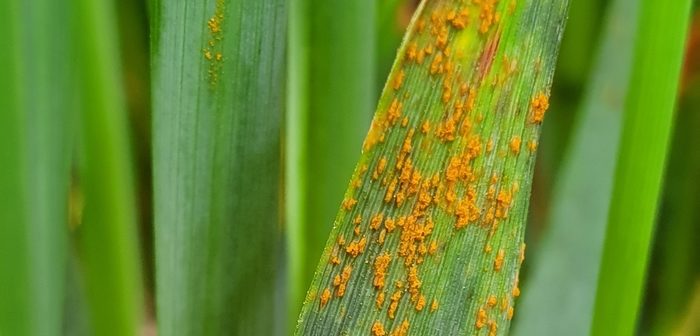Oat growers have a major new fungicide option for 2022, with the SDHI + triazole fungicide Elatus Era (benzovindiflupyr + prothioconazole) now approved for use on the crop.
Notably, Elatus Era provides label approval against crown rust. Crown rust is a major disease that has increased as oats have become more popular, says Syngenta regional technical manager, Joe Bagshaw, but against which a number of fungicides have been, or are being, lost.
“The popularity of oats has increased substantially over recent years,” says Mr Bagshaw, “but crown rust can slash yields by up to a fifth. Elatus Era is already well recognised for strong rust control in wheat and barley. Now, with the loss of other active ingredients, its approval on oats has come at an opportune time. It has been evaluated on both winter and spring oats.”
Pointing to oat trial comparisons against a number of other fungicides, Mr Bagshaw says Elatus Era has given clearly superior crown rust control and additional yield.
“In an ADAS oat trial in a high disease pressure situation in Devon, a single application of Elatus Era at the important T2 timing boosted yield by more than 3.0 t/ha over the untreated,” says Mr Bagshaw, “as well as by 1.9 t/ha over a triazole and by 1.6 t/ha over a strobilurin-based fungicide. Another big benefit seen with Elatus Era in the trial was reduced brackling.
Brackling reduced by 90%
“Heavily brackled oats that need picking up off the ground at harvest are not something you want, especially if growing for the quality human consumption market. In the trial, brackling was reduced from 90% with the triazole treatment and 76% with the strobilurin treatment to just 23% with Elatus Era. We attribute reduced brackling to improved disease control helping to better maintain plant cell structure.”
As well as crown rust control, Elatus Era has shown good control in trials of the other important oat disease, powdery mildew, notes Mr Bagshaw, and increased yield in mildew situations.
“The addition of oats to its label means Elatus Era can now be used across eight crop types: wheat, barley, triticale, rye, linseed/flax, combining peas, field beans and oats,” he points out.
With oats such an important crop in Scotland, Borders-based Syngenta area business manager, Iain Lindsay, believes this latest approval is a breakthrough for Scottish growers. “Elatus Era has already attracted interest for use in winter and spring barley in Scotland,” says Mr Lindsay, “as well as for protecting wheat against both Septoria tritici and yellow rust. This latest approval in oats, and in combining peas and field beans, makes fungicide selection for growers that much easier – since only a single product needs to be stored for use on multiple approved crops.”
According to the product label, Elatus Era can be applied once per oat crop at a maximum dose of 1.0 litre/hectare/crop, and with a latest time of application of up to and including the end of heading: inflorescence fully emerged (GS59).




